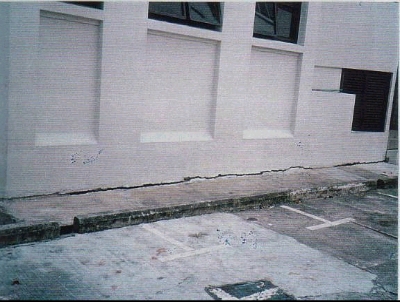Case 4
- Introduction
- Causes of Defects
- Good Practices
- Standards
- Maintenance and Diagnostics
- Remedial
- Similar Cases
- References

Introduction
Cracking Due To Movement In Adjacent Apron
Type of Building: Governmental building
Age of Building: Between 4-5 years
Cracks in plaster usually happens when the wall and plaster cannot moved together structurally. With differential movement and plaster being a thick layer which is not elastic by nature, cracks in plaster take place. If the cracks in the plastering correspond with cracks in the walls it is likely that these are the roots of the defect and the cause of the cracking should be ascertained.
Movement of the structural background upon which a plastering is applied may take various forms and may be due to a variety of causes, according to the nature of the backing wall.
Shrinkage resulting from the initial drying out is perhaps the most common cause. Subsequent movement, wetting and drying of the backing wall during the life of the building may also result in dimensional changes.
In this case, cracking of plaster occurs only near to the ground and not observed on other areas of the wall. The crack stretches horizontally across the length of the wall.